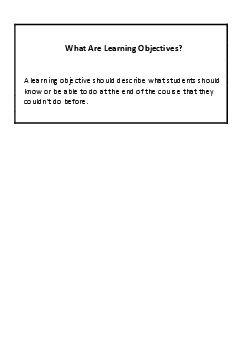PPT-Intro to communication Learning Objectives
Author : joanne | Published Date : 2023-11-19
Success Criteria To know about communication within the body Outline the need for communication systems within multicellular organisms State that cells need to communicate
Presentation Embed Code
Download Presentation
Download Presentation The PPT/PDF document "Intro to communication Learning Objectiv..." is the property of its rightful owner. Permission is granted to download and print the materials on this website for personal, non-commercial use only, and to display it on your personal computer provided you do not modify the materials and that you retain all copyright notices contained in the materials. By downloading content from our website, you accept the terms of this agreement.
Intro to communication Learning Objectives: Transcript
Download Rules Of Document
"Intro to communication Learning Objectives"The content belongs to its owner. You may download and print it for personal use, without modification, and keep all copyright notices. By downloading, you agree to these terms.
Related Documents














